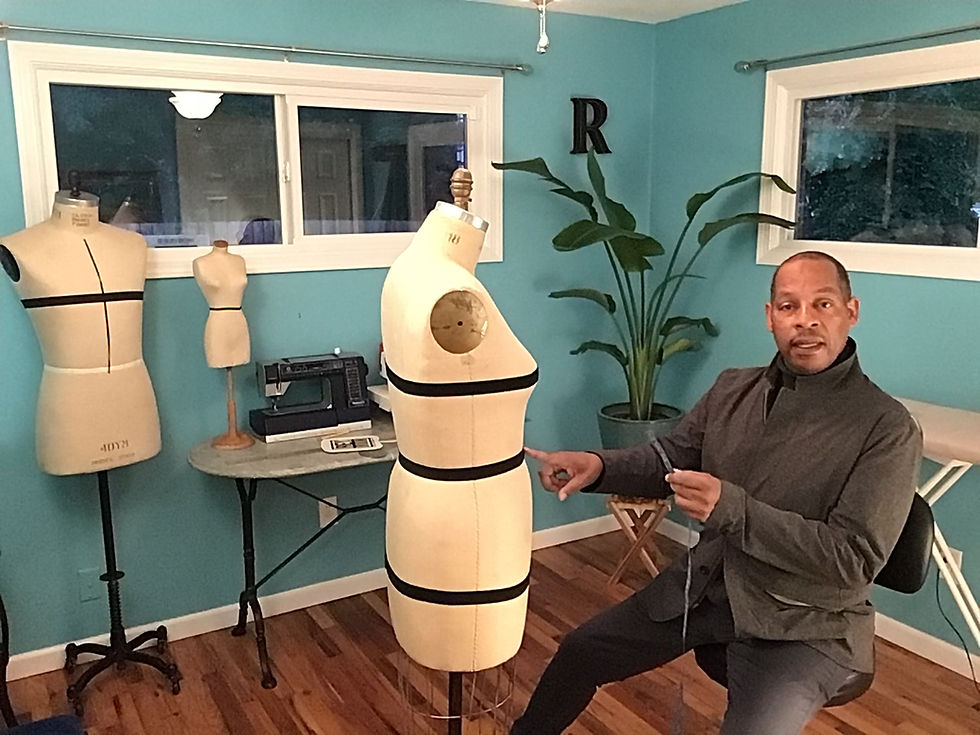Understanding Vanity Sizing: What You Need to Know
- Reyburn Brown

- 6 days ago
- 4 min read

If you've ever tried on clothes from different brands and noticed that a size small in one store fits like a medium in another, you're not alone. This confusing inconsistency is often due to a practice called vanity sizing. It’s a fascinating topic, especially for those learning the craft of apparel design and pattern making. Understanding vanity sizing can help you create better-fitting garments and navigate the fashion industry with more confidence.
Let’s dive into the vanity sizing concept explained and explore what it means, why it exists, and how it impacts both designers and consumers.
Vanity Sizing Concept Explained
Vanity sizing is the practice where clothing brands label garments with smaller sizes than the actual measurements would suggest. For example, a dress that measures like a size 10 might be labeled as a size 8. This strategy plays on the psychological appeal of wearing a smaller size, which can boost a customer’s self-esteem.
This sizing inconsistency can be frustrating for anyone trying to learn pattern making or design because it blurs the lines of standard sizing charts. As a student or aspiring pattern maker, you need to understand that sizing is not always standardized across brands or regions.
Here’s a simple breakdown of how vanity sizing works:
Garments are made larger but labeled smaller.
Customers feel better about their size, encouraging brand loyalty.
Sizing charts become less reliable for accurate fitting.
This practice can make it tricky to create patterns that fit universally. When you design, you must consider the target brand’s sizing philosophy and customer expectations.

How Vanity Sizing Affects Pattern Making and Design
When you’re designing apparel, precision is key. Vanity sizing throws a wrench into this because it means the size label doesn’t always match the actual garment measurements. This can lead to confusion in several ways:
Inconsistent fit: A size 6 in one brand might be a size 8 in another.
Pattern adjustments: You may need to alter patterns to fit the brand’s vanity sizing standards.
Customer expectations: Shoppers expect to fit into smaller sizes, which can influence your design choices.
To handle this, it’s essential to:
Research brand-specific sizing charts. Don’t rely on generic size standards.
Take detailed measurements. Focus on actual garment dimensions rather than size labels.
Test fit samples carefully. Adjust patterns based on real-world fitting sessions.
By doing this, you’ll create garments that fit well and meet customer expectations, even when vanity sizing is at play.

Why Do Brands Use Vanity Sizing?
Understanding why brands use vanity sizing helps you see the bigger picture. It’s not just a random choice but a strategic decision rooted in marketing and psychology.
Here are the main reasons:
Boost customer confidence: Wearing a smaller size can make shoppers feel better about themselves.
Encourage repeat purchases: Happy customers are more likely to return.
Stand out in a competitive market: Brands want to differentiate themselves by offering “smaller” sizes.
Adapt to changing body sizes: As average body sizes have increased over the years, vanity sizing helps brands keep size labels appealing.
For designers and pattern makers, this means you must balance realistic garment dimensions with the brand’s marketing goals. It’s a delicate dance between fit accuracy and customer satisfaction.
Practical Tips for Navigating Vanity Sizing in Your Designs
If you’re learning pattern making or designing apparel, here are some actionable tips to help you manage vanity sizing effectively:
Always measure garments, not just rely on size tags. Use a tape measure to get accurate dimensions.
Create size charts based on actual measurements. This helps maintain consistency in your designs.
Communicate clearly with clients or brands. Make sure everyone understands the sizing philosophy being used.
Use fit models that represent your target customer. This ensures your patterns will work in real life.
Stay updated on industry trends. Vanity sizing practices can evolve, so keep learning.
By applying these tips, you’ll improve your skills and create garments that fit well, regardless of the size label.
Embracing the Challenge: Vanity Sizing and Your Future in Fashion Design
Vanity sizing might seem like a hurdle, but it’s also an opportunity. As a future pattern maker or fashion designer, understanding this concept gives you an edge. You’ll be better equipped to:
Design garments that fit diverse body types.
Adapt to different brand standards.
Communicate effectively with manufacturers and clients.
Build a reputation for creating well-fitting, customer-friendly apparel.
Remember, mastering the art of pattern making means mastering the details, including how sizing works in the real world. Embrace the challenge, and use your knowledge to create designs that make people feel confident and comfortable.
Vanity sizing is more than just a marketing trick - it’s a key factor shaping how clothes fit and how customers feel about their bodies. By understanding it deeply, you’ll be ready to create patterns and designs that truly work in today’s fashion landscape. Keep learning, stay curious, and enjoy the journey of mastering apparel design!









While working in Paris France, we were required to label all garments going to the United States one size down.